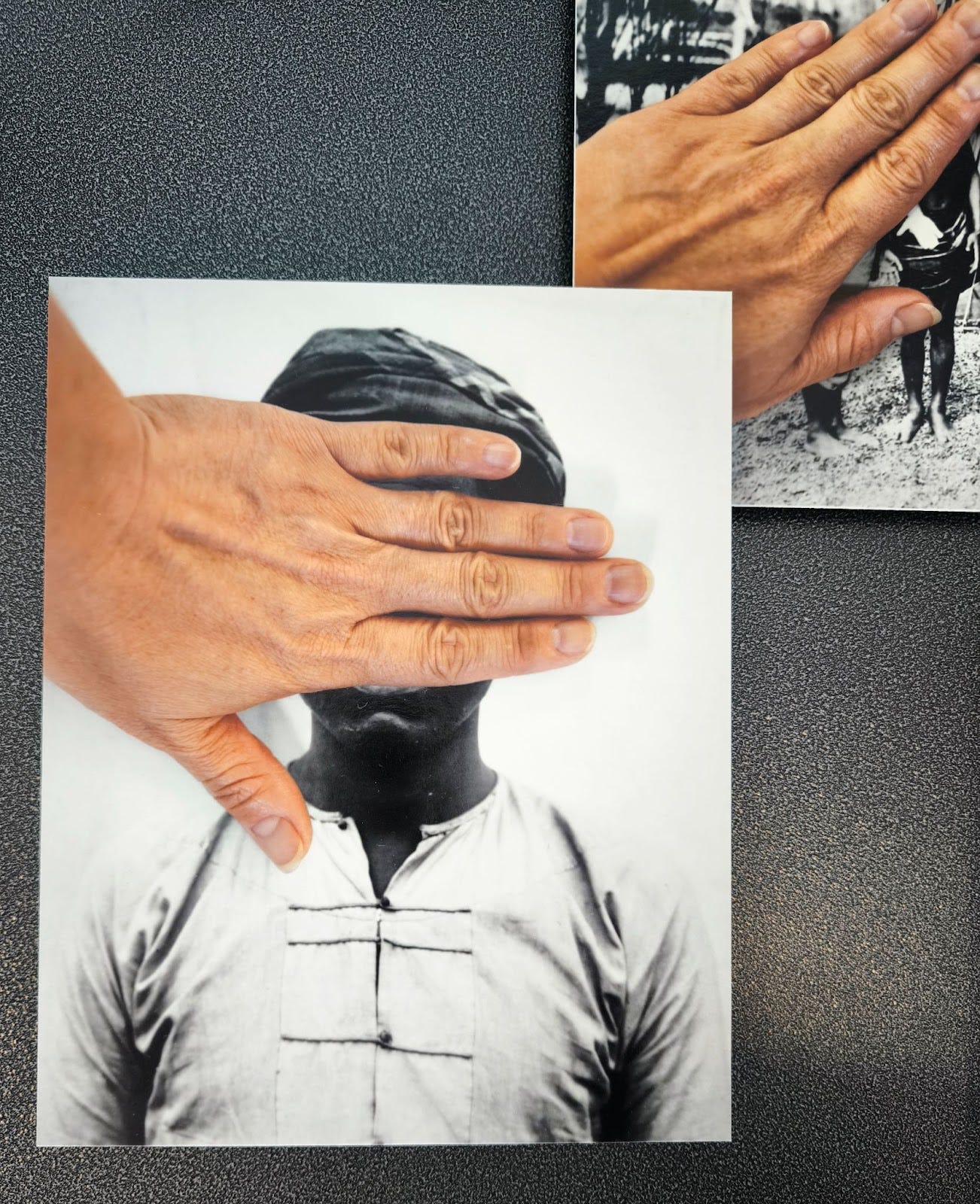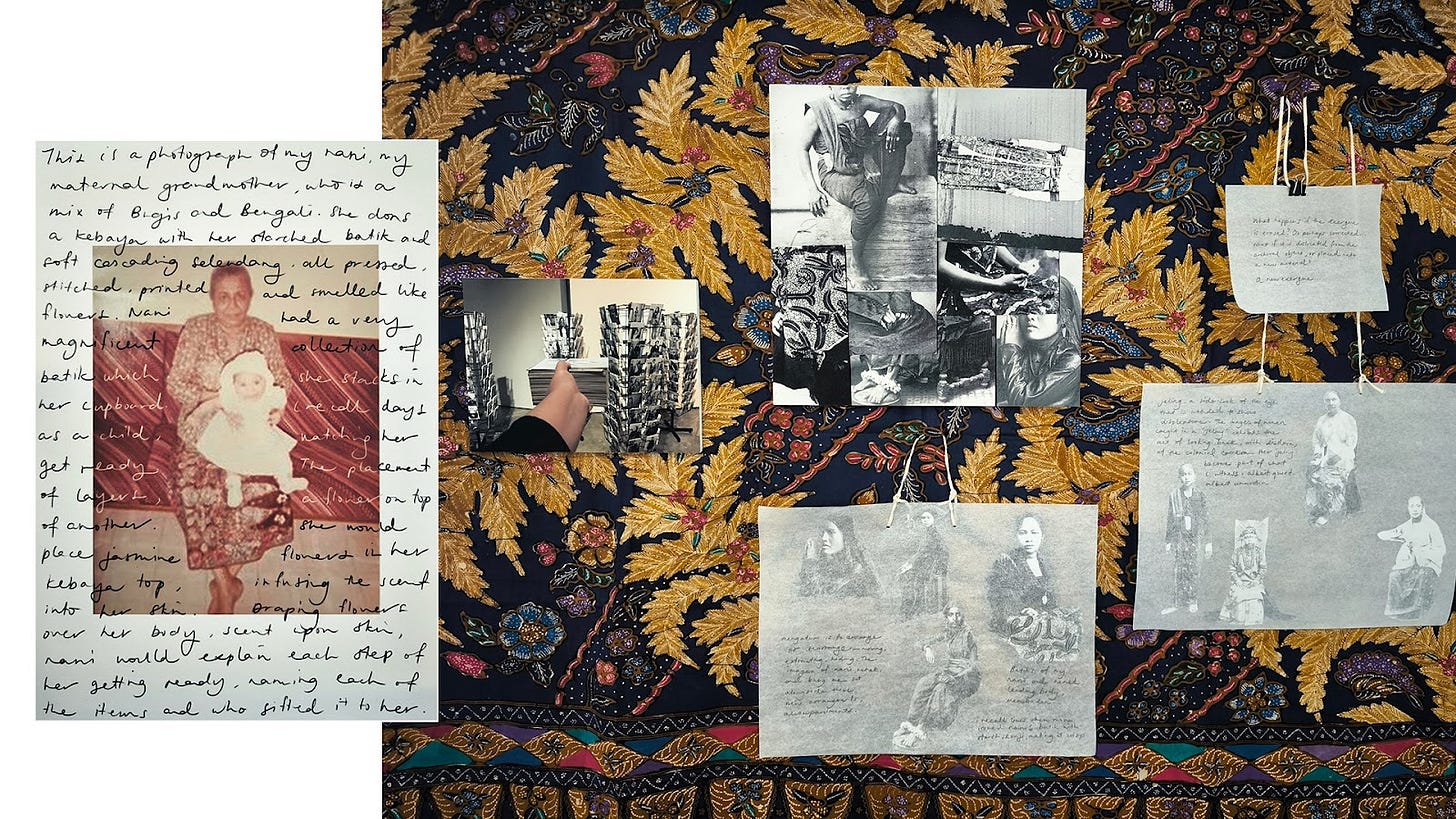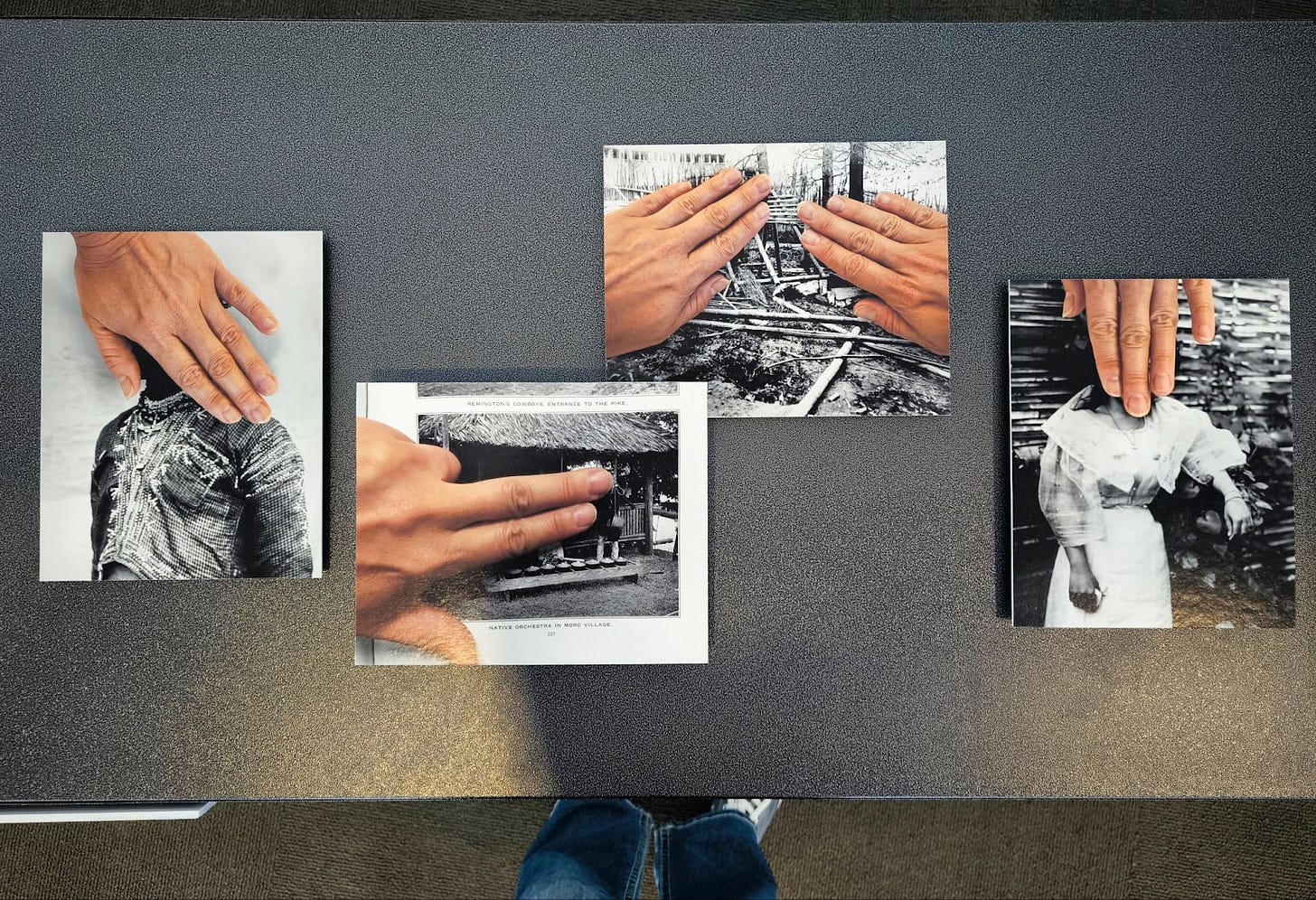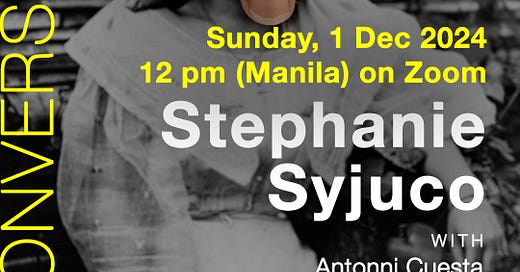We're in Conversation with Stephanie Syjuco about the Historic Archive on Dec 1. Join us!
On Sunday, 1 Dec at 12 noon (Manila), we're chatting with Stephanie about talking back to the colonial archive. Join us on Zoom!
Join artist, professor, Insights-Parallax grant recipient Stephanie Syjuco, Insights’ Antonni Cuesta, MAP Academy’s Varun Nayar, and our own Tom White for a conversation on talking back to the photo archive.
📅 Sunday, 1 December 2024
⏲ 12 noon GMT +8 (Manila/Singapore)
🎦 On Zoom
(If you’re in west coast USA it’s on 30 Nov, at 8 pm PST)
So that is how to create a single story, show a people as one thing, as only one thing, over and over again, and that is what they become. . . . The consequence of the single story is this: It robs people of dignity. It makes our recognition of our equal humanity difficult. It emphasizes how we are different rather than how we are similar.”
— Chimamanda Ngozi Adichie, The danger of a single story
The photo archive is far from a dusty, static collection of pictures on shelves. It is in many ways a living collection of our history: evidence of the stories that shaped us, and to some degree, determine what we become. We come back to our archives, again and again and again to say this is what we were, or look how far we’ve come, or here is where we want to be. Sometimes it is simply this is what we remember.
But how do we remember?
“I wasn’t interested in a heritage study, where I would find cultural connection with my ‘identity’. I was attempting the opposite, which was to see how the empire sees ‘us’,” writes Stephanie Syjuco in Object Number 2022.24.1, the essay for which she received the Parallax and Insights Feature Grant.
Photo archives tell stories from a particular perspective. They reveal who had power to tell the stories, who they best served ...and by their silences, who they did not. This is the focus of Stephanie Syjuco’s work. She examines “how these disciplines go hand-in-hand with producing and proliferating images and documents of exclusion, generating a skewed collection that mirrors an American imagination built on white supremacy, ethnographic record, and cultural Othering.”

Critically, she takes a close, hard look at who had the power to tell the devastating story of Filipino Americans, notably with the archive of “ethnographic” photos made at the Philippine Village — a constructed “human zoo” — in the 1904 St Louis World Fair. She notes that the “overwhelming amount of demeaning and racist imagery produced just at the Fair” have given rise to diminished, dehumanised portrayals of Filipino Americans, a narrative that “keep[s] on giving over a hundred years later.”

At the opening of Singapore International Photo Festival’s Archival Allergies exhibition, artist, researcher and lecturer Dr Nurul Huda Rashid tells us “There’s a lot of rage that has come with the way colonial archives were photographed.” In confronting the stories that colonial archives tell about her community, she states that “The allergic reaction was quite drastic.”
Archival Allergies is a group exhibit that also features Stephanie’s work Block Out The Sun, along with Dr Nurul, Nydia A Swaby, Abednego Trianto Kurniawan and Sajan Mani. Each of these artists offer their “personal remedy” to the legacy of colonialism in photographic records.

Nurul Huda Rashid redacts, annotates, and reimagines colonial photographs in a different context: her grandmother’s. Stephanie, in Block Out the Sun, covers faces, hands and identifying features from photos from the St Louis Fair, as if to protect them from a public view that had already cost them so much.
Both Stephanie and Nurul come to their work with the critical discipline of researchers. However, in reshaping the stories claimed by the colonial archives, they are also reclaiming power over the narratives told of their communities’ cultures and histories. With that reclamation of power, they imbue in their work the respect, dignity and care that were stripped from colonial photographic subjects.
I borrowed the wisdom of the inimitable Chimamanda Ngozi Adichie to start this newsletter, and I will end with another from her now legendary 2009 TED talk:
Stories matter. Many stories matter. Stories have been used to dispossess and to malign, but stories can also be used to empower and to humanize. Stories can break the dignity of a people, but stories can also repair that broken dignity.
— Chimamanda Ngozi Adichie, The danger of a single story
Join Stephanie, Toni, Varun and Tom for a conversation on reclaiming narratives at noon on 1 Dec.
— Charlene
☕️ Keep us going?
We know times are tight for many, but if everyone who receives this newsletter contributed $1 a month - that’s $12 a year - to our coffee pot, that would cover the honorariums we pay to each photographer featured here. If you can afford it, please buy us a coffee or 3. and help keep things free for those that can’t.
We run this as volunteers, so your contribution goes directly to supporting the photographers we feature. Thank you!



